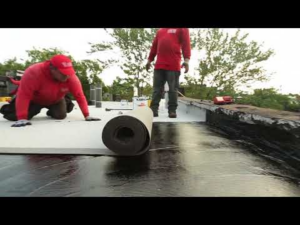
New Tool Enables Departments of Transportation to Analyze Rights-of-Way for Zero-Carbon Electric Grid Expansion
REDLANDS, Calif. — Research published by the Webber Energy Group (WEG) at the University of Texas at Austin, and by The Ray, a nonprofit studying technologies that can transform the transportation sector for a Vision Zero future, documented the efficiency and economic, societal, and environmental benefits of installing solar arrays on interstate right-of-way (ROW) land. The findings revealed that solar panels at these exits could generate up to 36 terawatt hours (TWh) a year—enough to power 12 million passenger electric vehicles—with the value of the energy generated by roadside solar panels estimated at $4 billion per year.
“The partnership between Esri and The Ray essentially helps the country rethink the ROW and move toward a stewardship model for the tens of thousands of acres on the highway roadsides”
Tweet this
However, simply installing solar arrays at interchanges, exits, rest areas, and visitor centers—which are maintained by state governments—can be challenging due to safety, environmental, and future land-use considerations.
To help address this, The Ray partnered with Esri, the global leader in location intelligence, to configure an ROW solar mapping tool that can help users quickly and precisely analyze how suitable and economically valuable ROW locations might be for solar array placement.
“Since our founding, The Ray has been inspired by the opportunity we saw in the underutilized land along highway roadsides,” said Laura Rogers, deputy director of The Ray. “Now, with the support of this cutting-edge solar mapping tool, The Ray can work with transportation agencies across the country to help them envision and plan solar energy projects using their ROW land in a way that simply wasn’t available before.”
The new mapping tool is also capable of producing precise configurations of solar arrays on all types of ROW, utilizing the state department of transportation’s (DOT) own datasets. Built using Esri’s ArcGIS software suite, the tool includes advanced 3D modeling, solar radiation calculations based on elevation and surface, and viewshed analysis.
Rogers continued, “What used to take weeks or months to evaluate suitability for roadside solar development, this tool that Esri provided accomplishes at a fraction of the time with much more precision.”
With a location built on 18 miles of west Georgia’s section of Interstate 85, The Ray also functions as a proving ground for new technologies like solar power, electric vehicle (EV) charging stations, and smart landscape architecture that can serve as a model for sustainable infrastructure management.
“The partnership …….
Source: https://gisuser.com/2021/10/esri-partners-with-the-ray-to-map-solar-energy-hot-spots/






